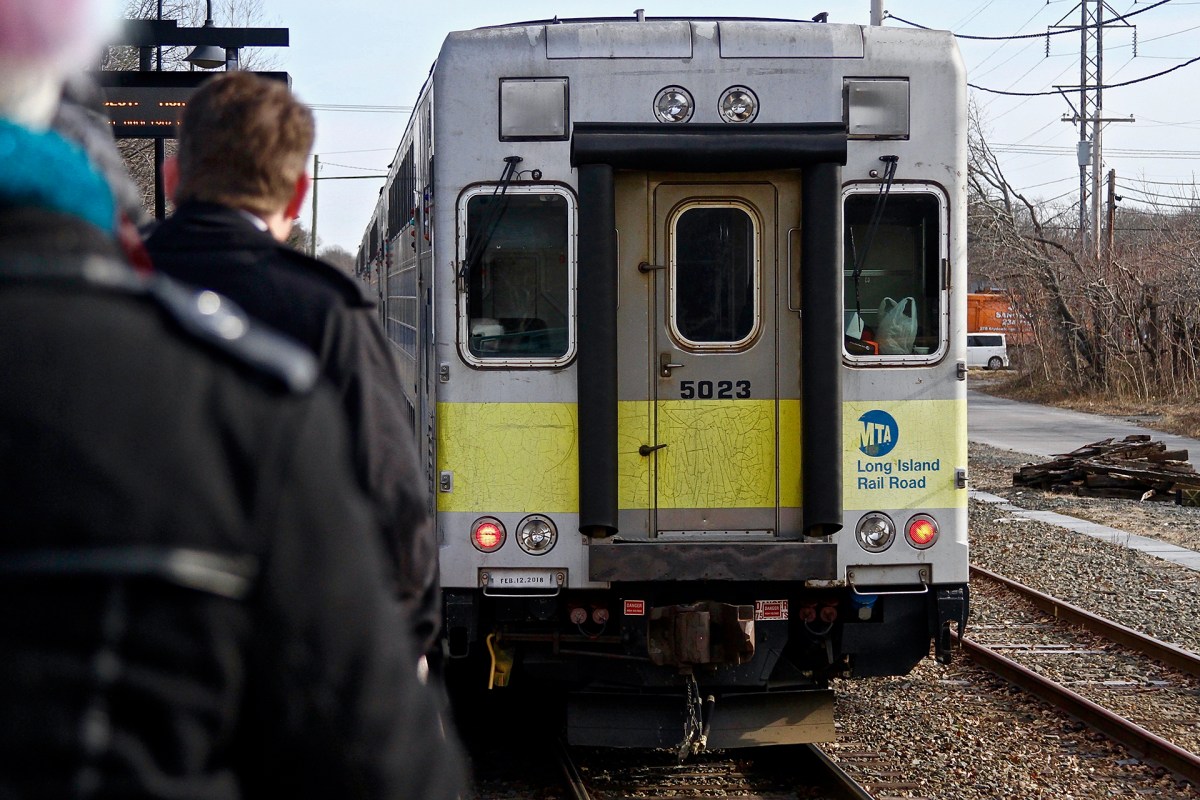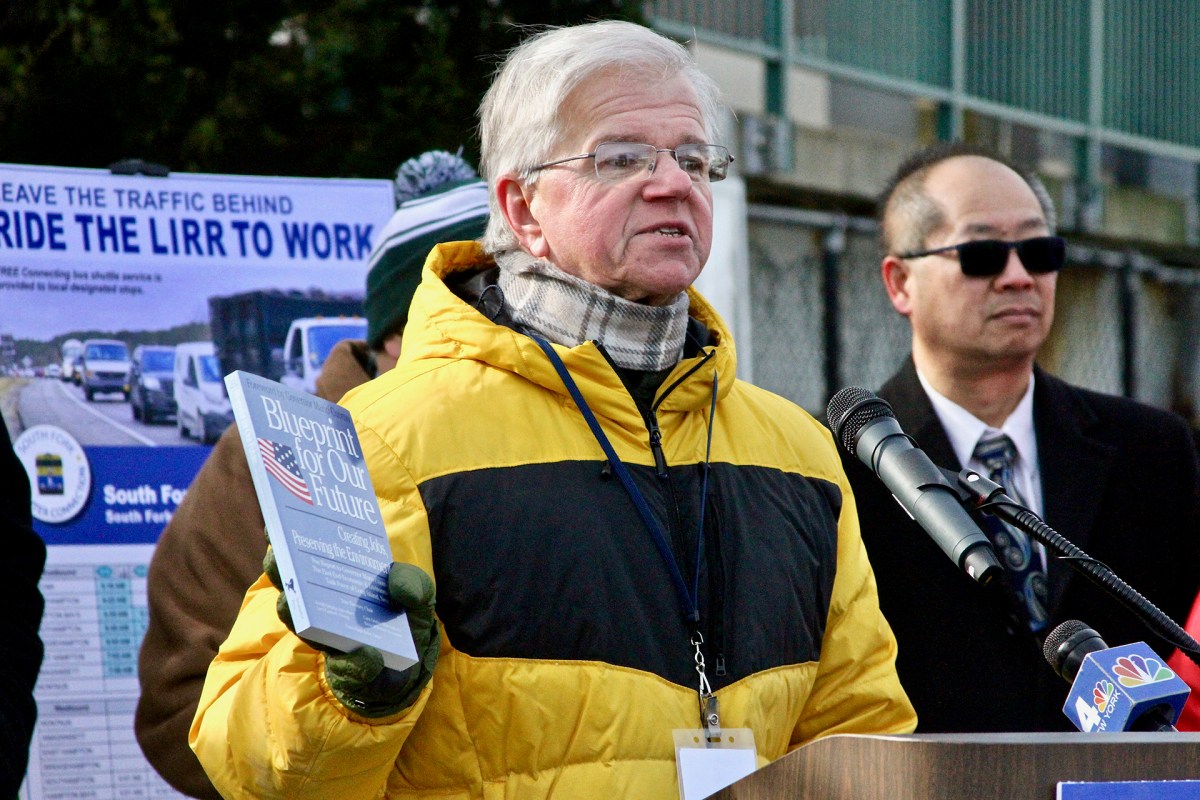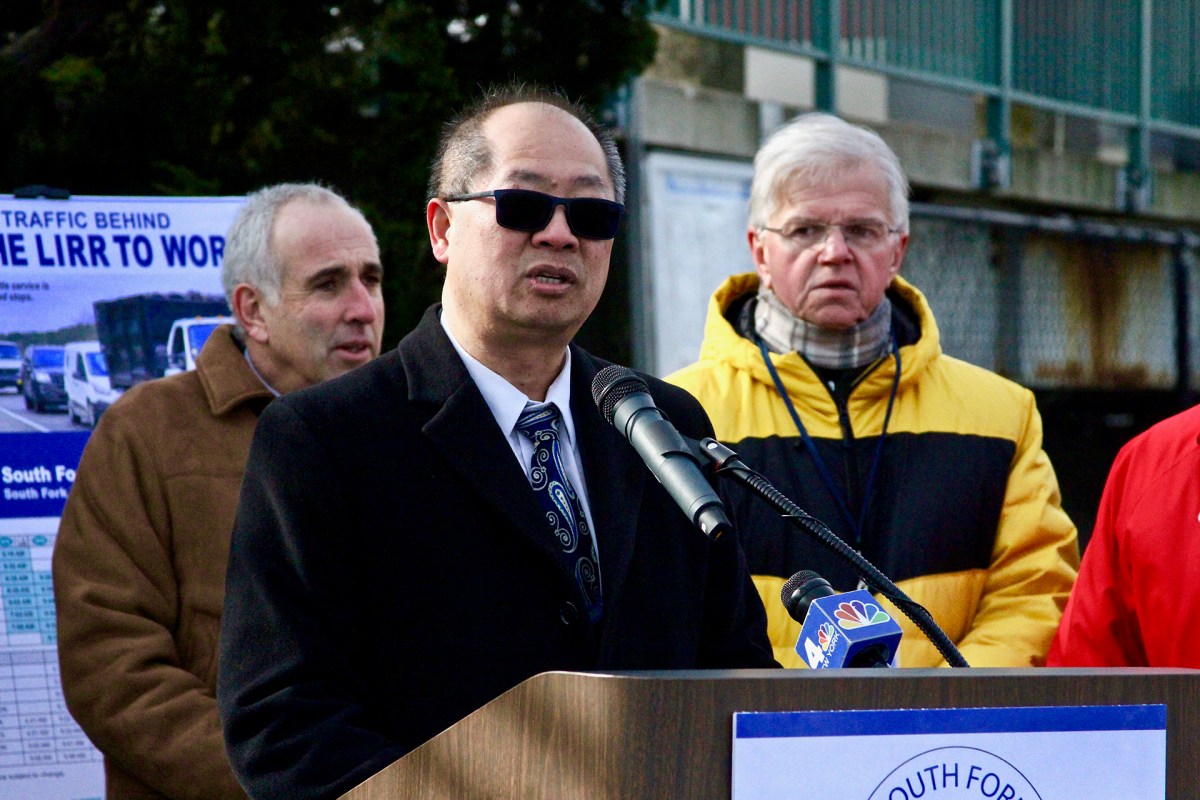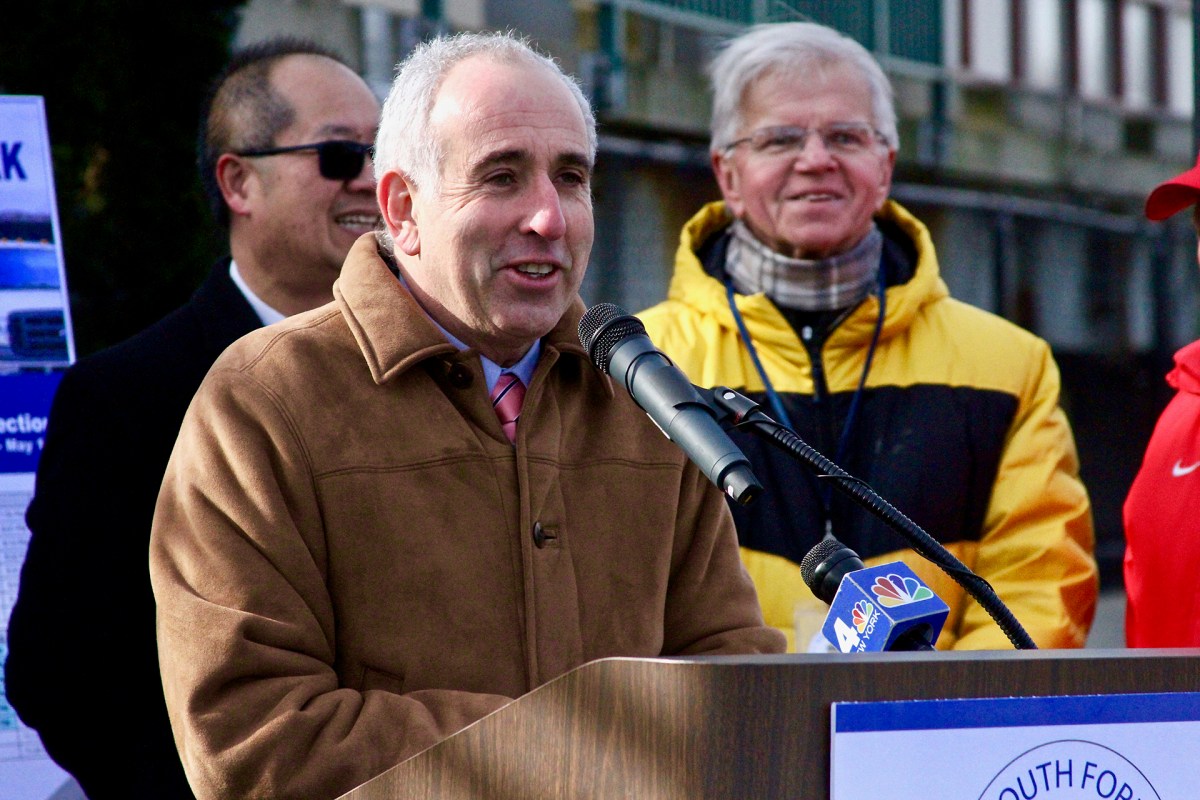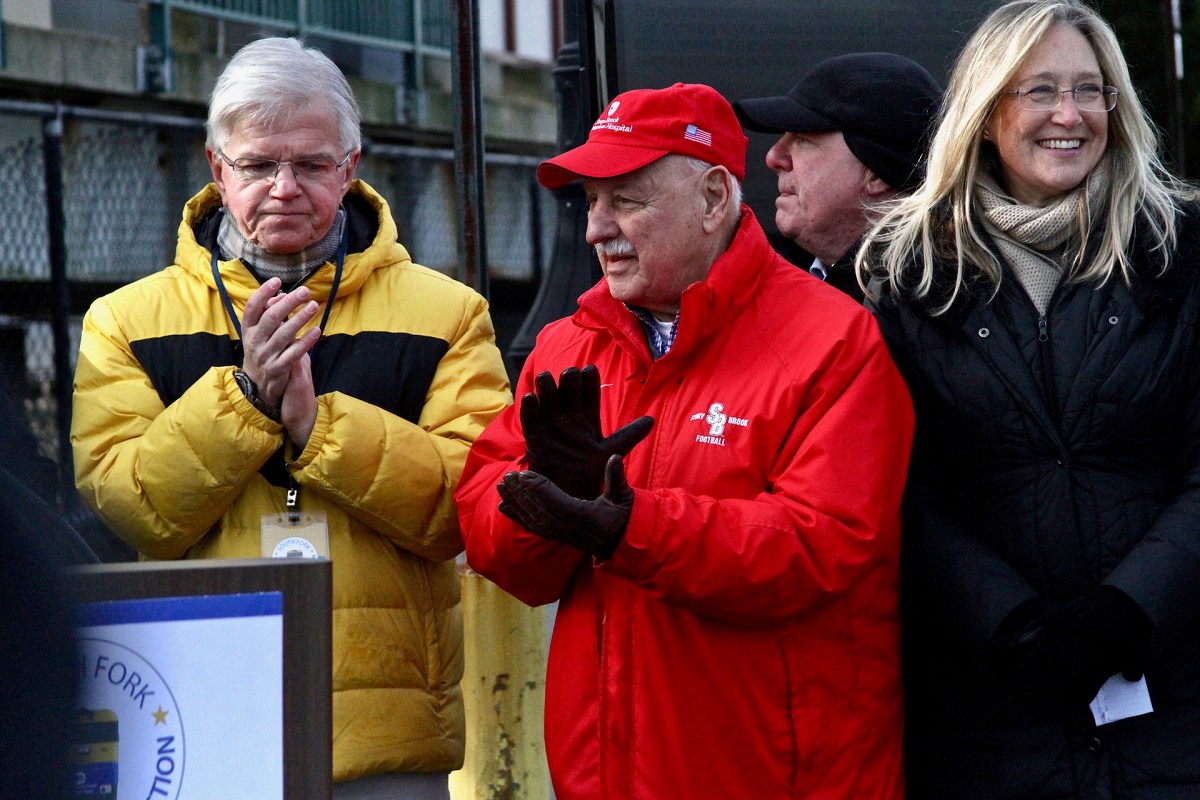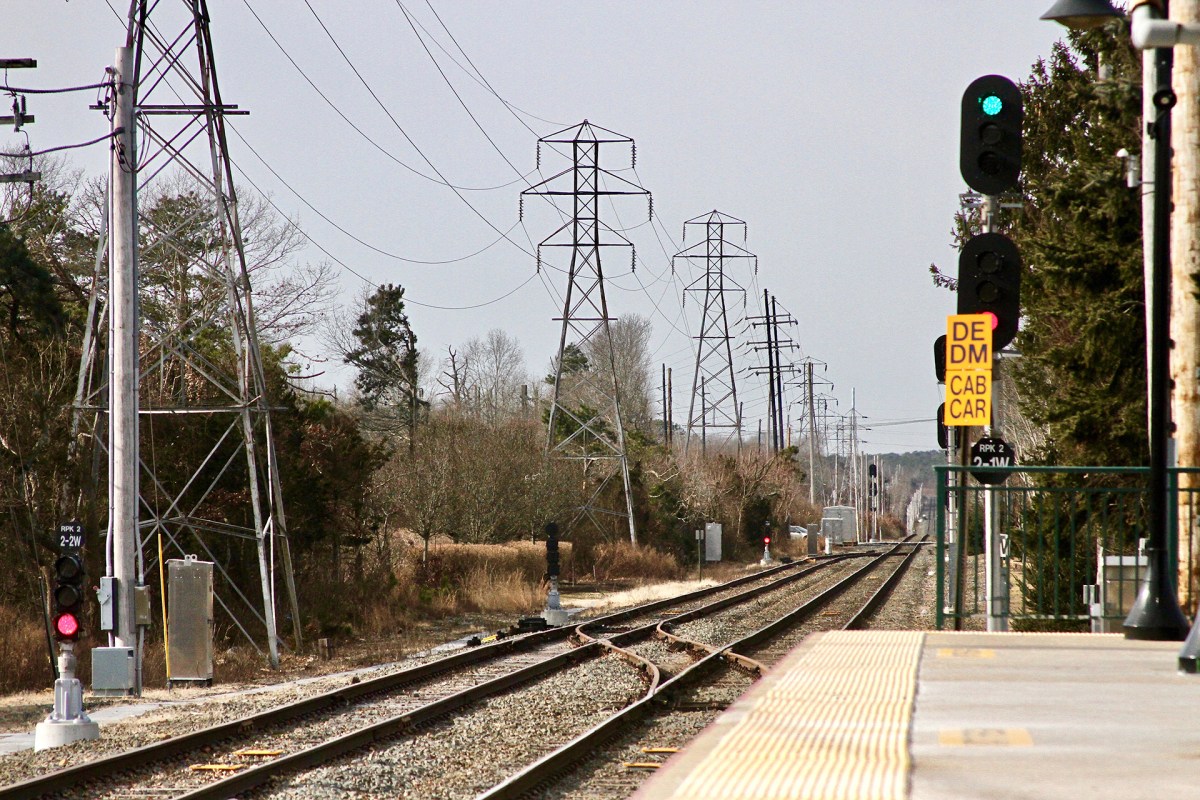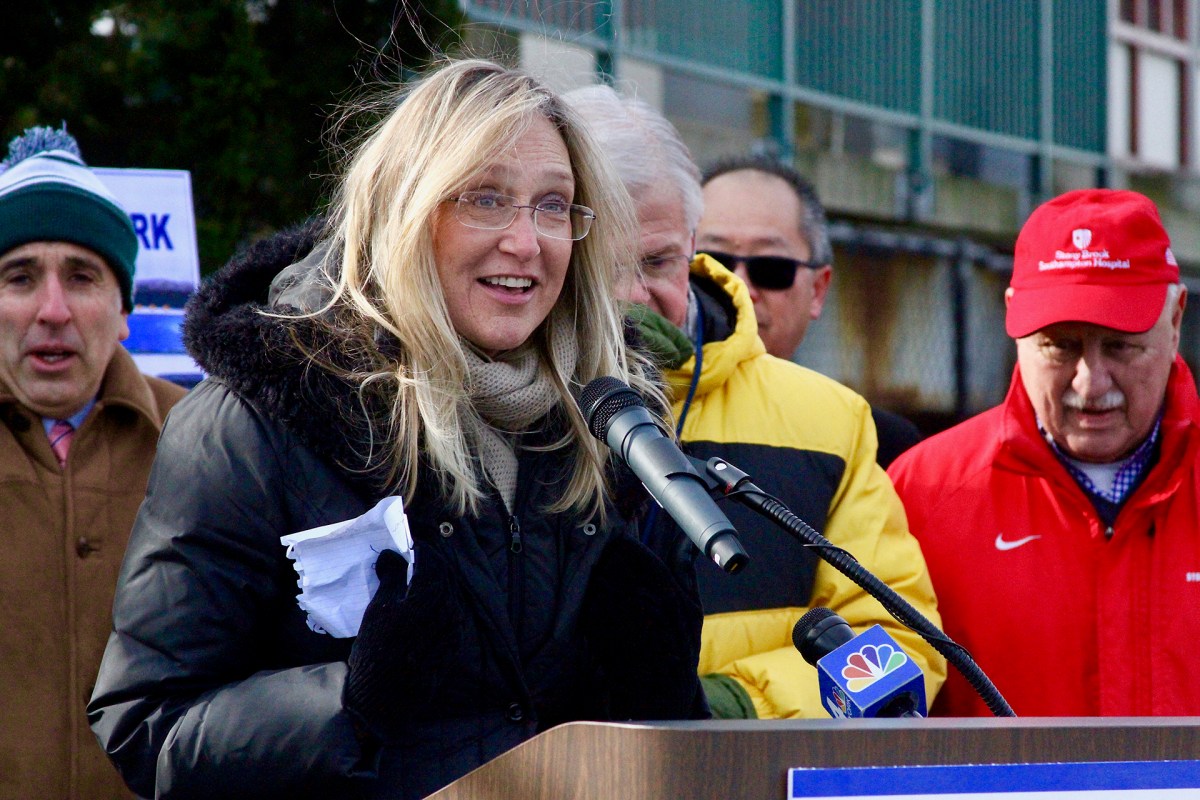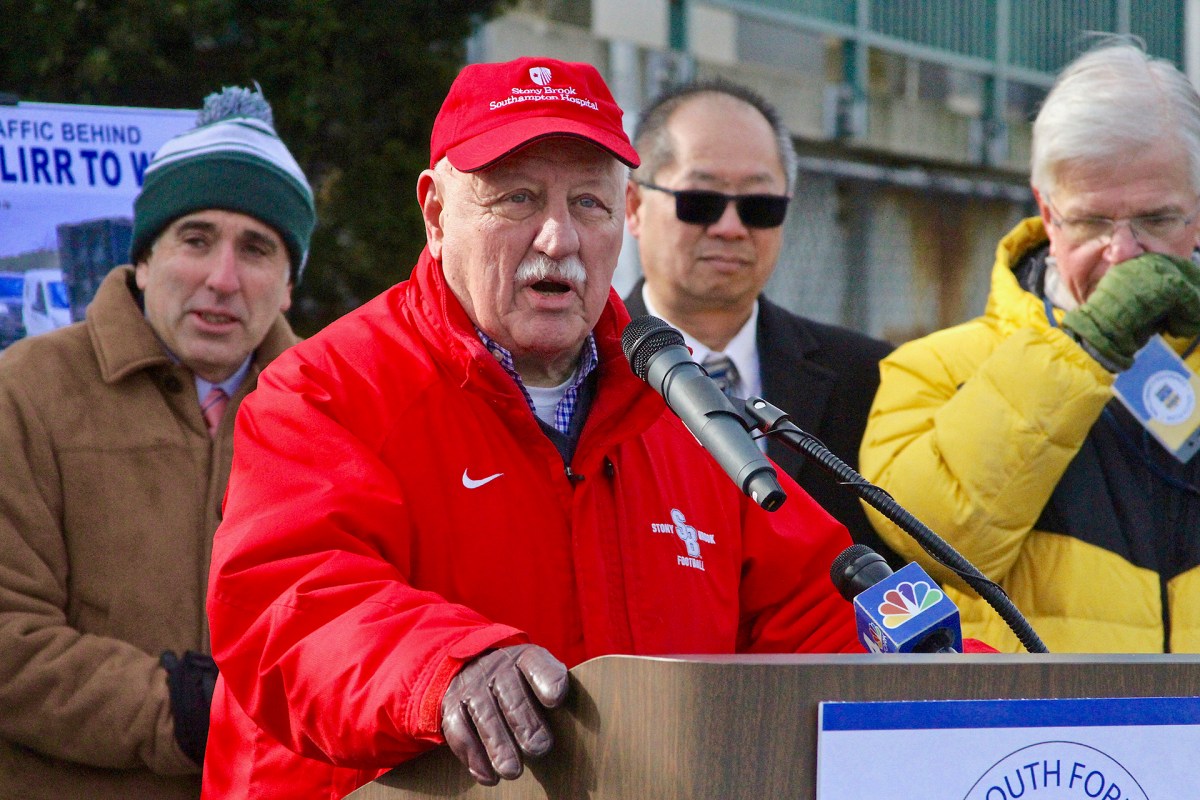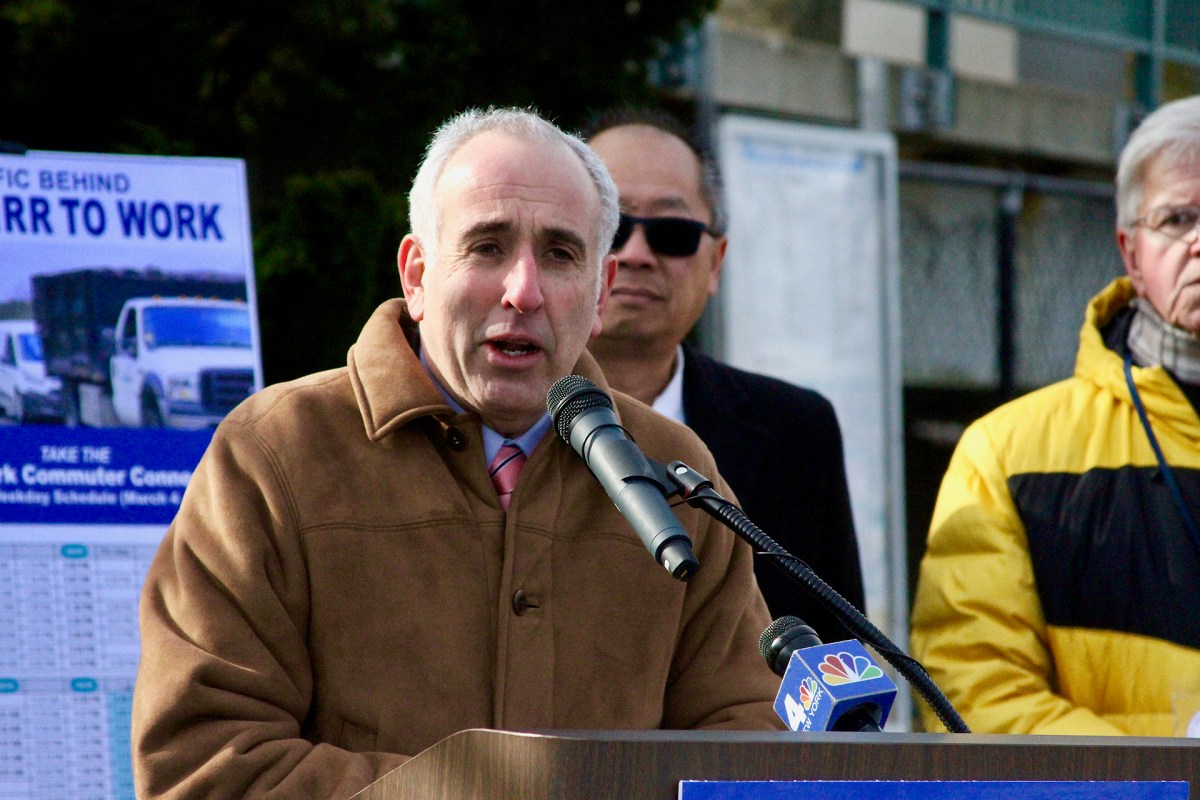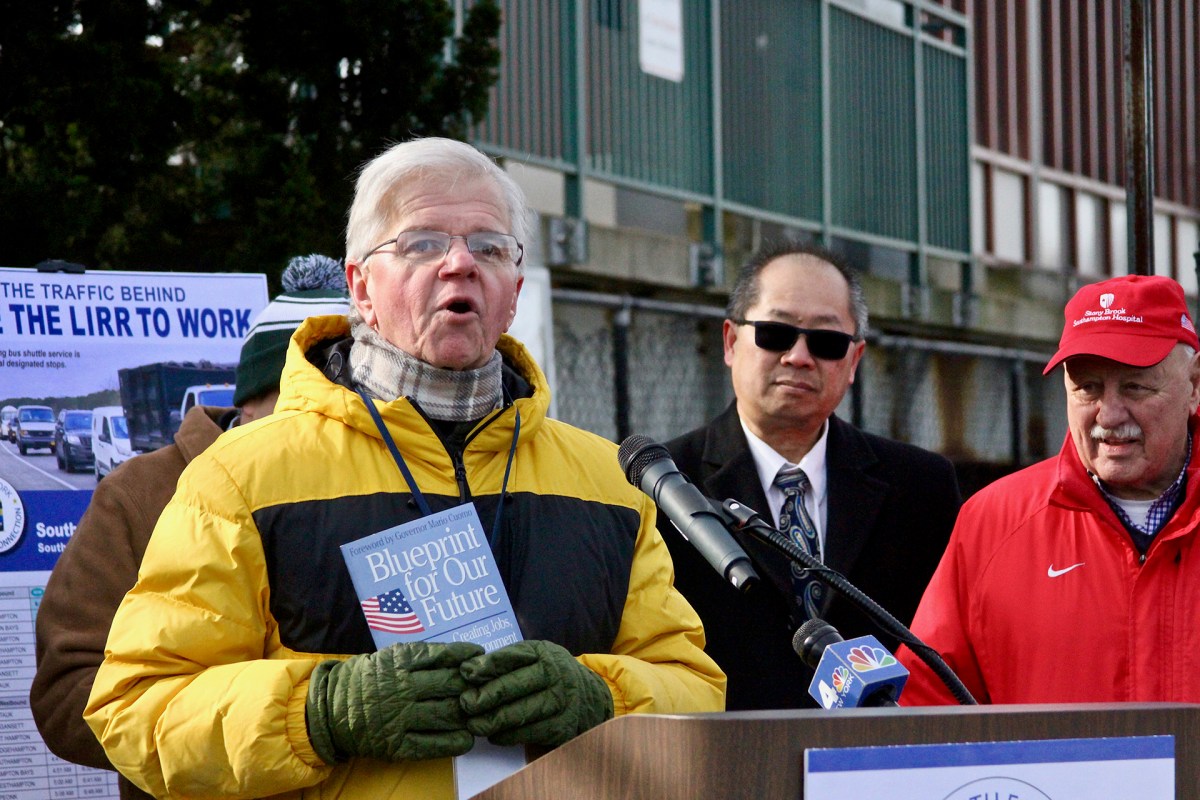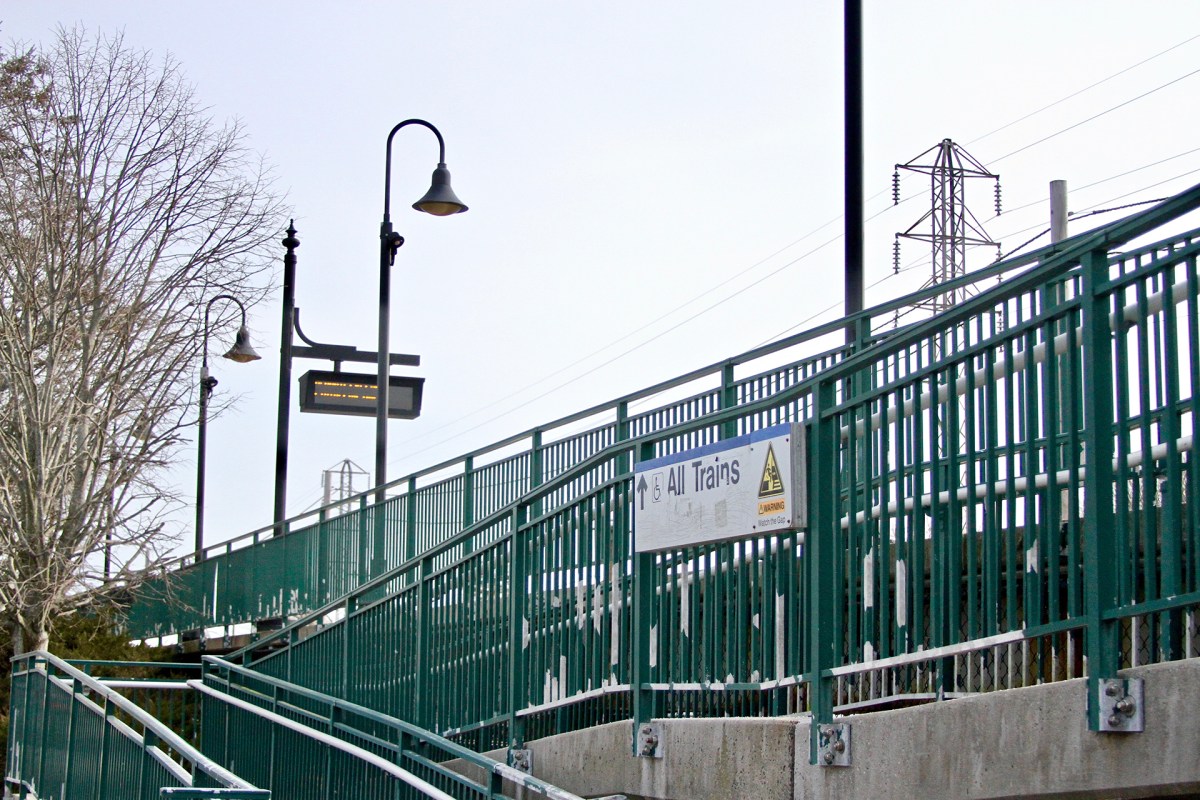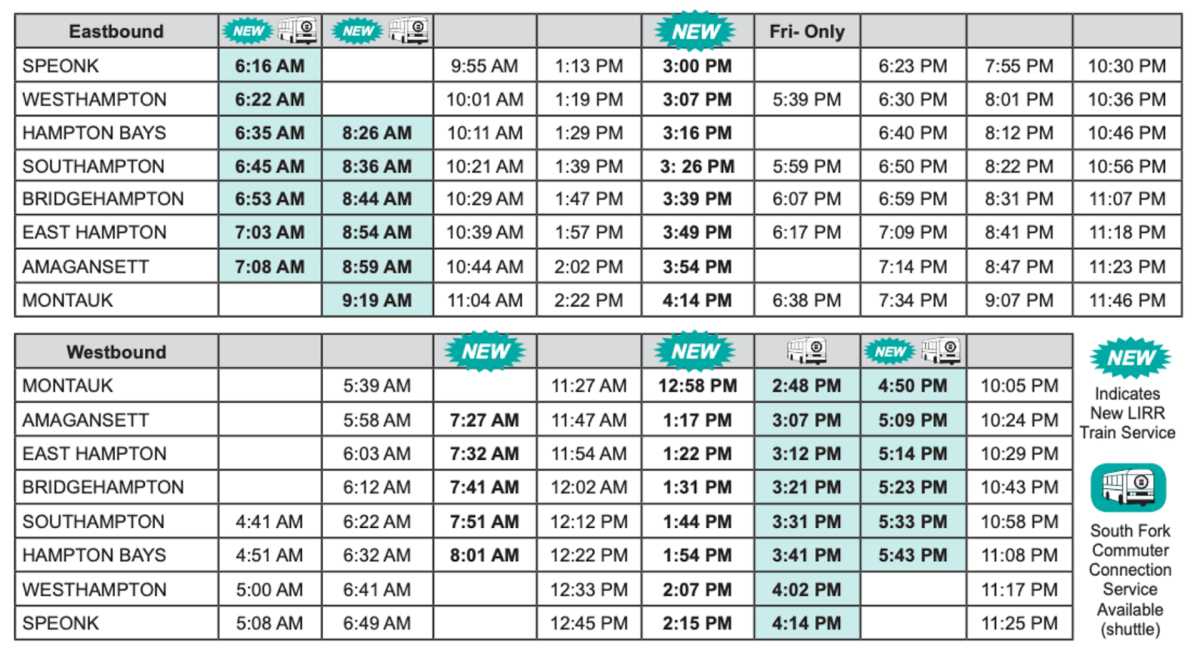Connection Is Key For South Fork
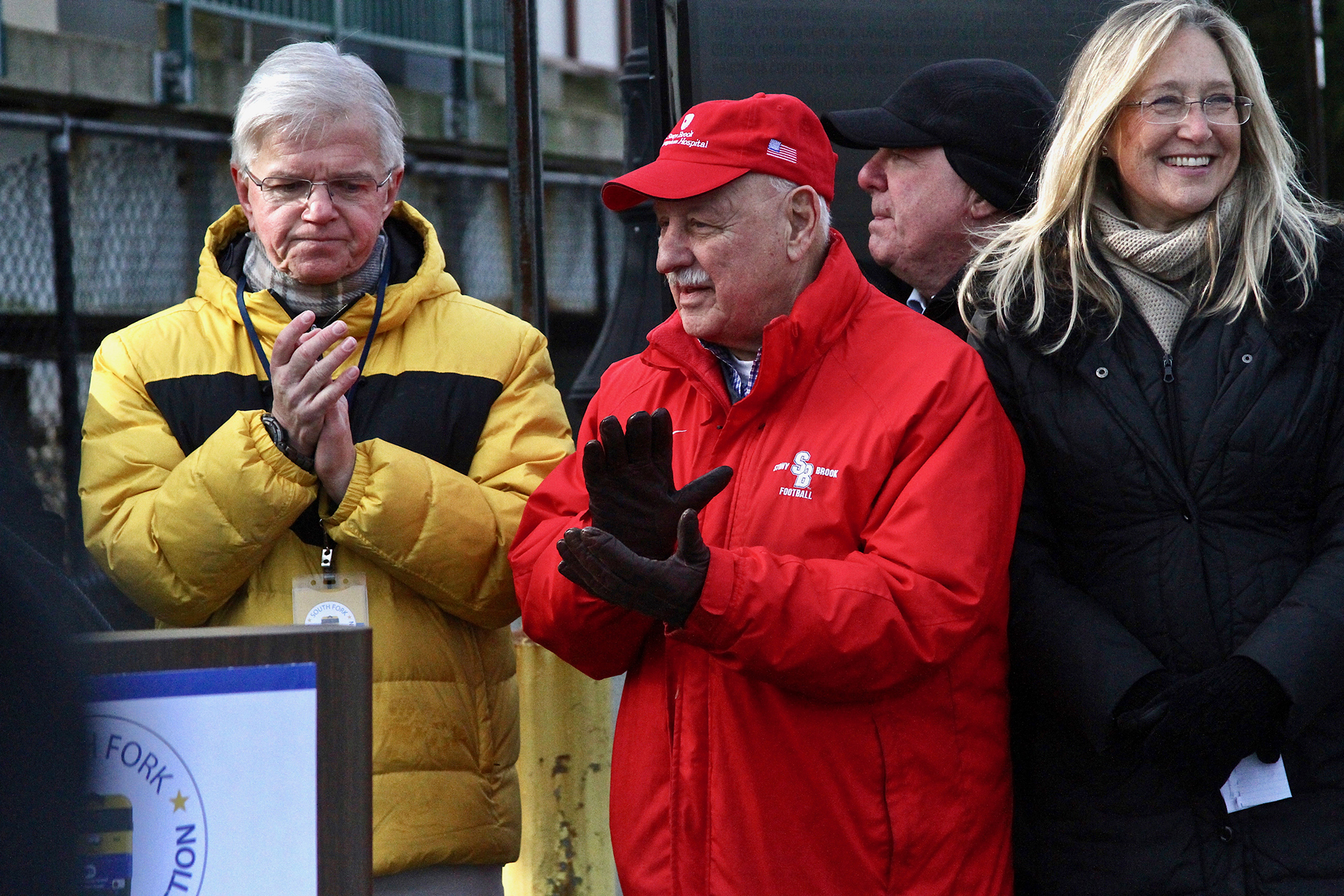
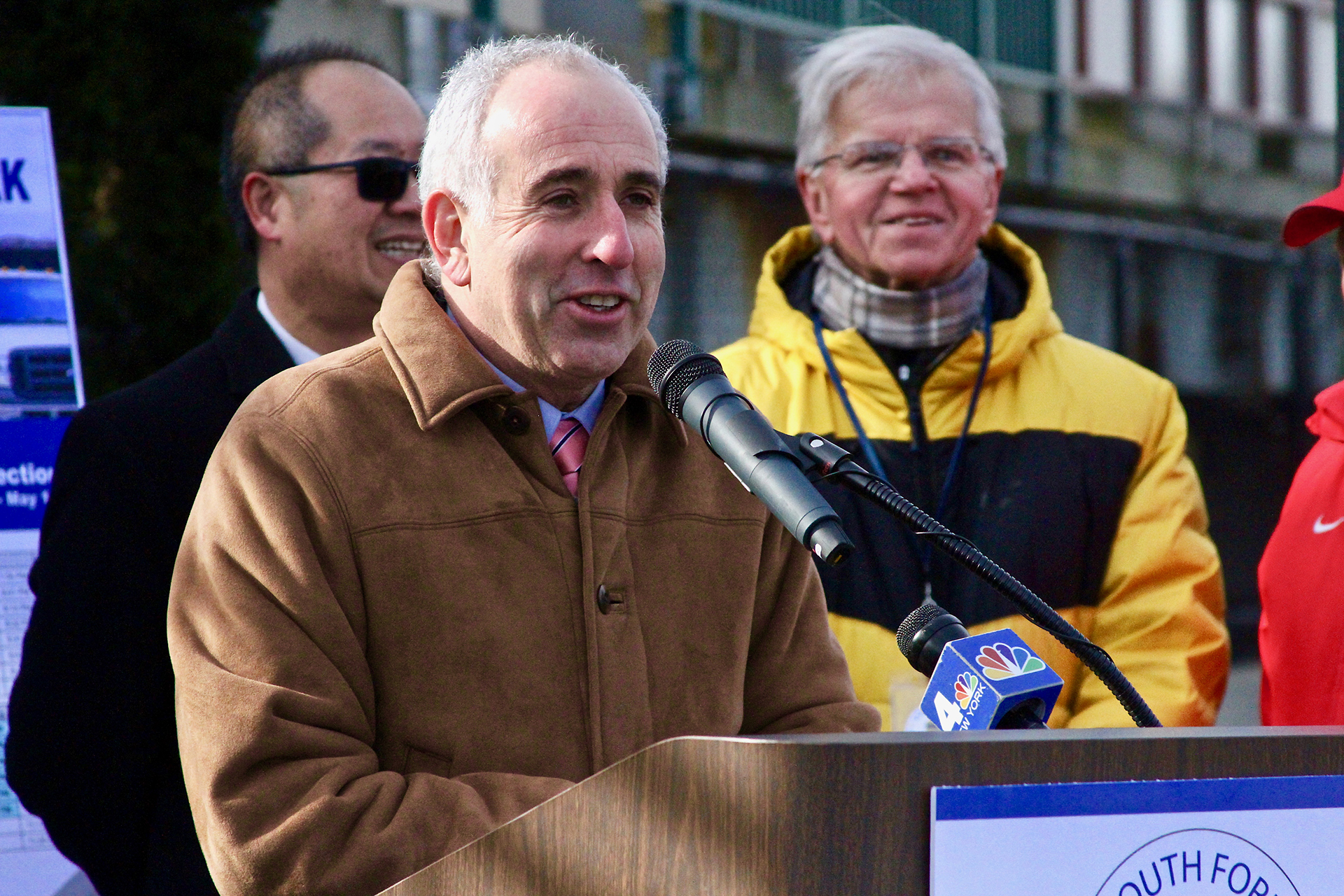
Assemblyman Fred Thiele held up a book “Blueprint for Our Future” that was written by the East End Economic and Environmental Task Force of Long Island. It was commissioned 25 years ago by then-Governor Mario Cuomo to examine the economic and environmental future of eastern Long Island, and developed as a template for the interaction of a local community with state government. The work was the first to reference a South Fork Commuter Connection train service, which remained a dream for 15 years, until a trial run was conducted 10 years ago. This March, the dream will fully be realized.
“We’ve seen study after study and we knew we had to have a good public transit system on the East End as an alternative to the backup on County Road 39,” Thiele said. “It is a pleasure, after all these years, with the president of the Long Island Rail Road to be able to announce that this service is finally going to begin March 4. It’s been a partnership, a team effort to get this done.”
The service, which was unveiled at a press conference at the Hampton Bays train station on Friday, will offer local LIRR trips for $4.25 for a combined train and shuttle service each way, with stops in Speonk, Westhampton, Hampton Bays, Southampton, Bridgehampton, East Hampton, Amagansett, and Montauk. Select trains will connect with “last-mile” shuttle bus services operated by the Hampton Jitney and the Hampton Hopper to nearby workplaces and employment centers. Thiele worked with state Senator Ken LaValle last year to secure $500,000 in state funding for the towns to provide for the cost of the last mile of service.
With only two roads, Montauk Highway and Sunrise Highway, crossing the Shinnecock Canal, congestion on the East End has been growing year after year, especially over the summer months when area tourism is at its peak. It’s made it difficult for locals to travel and the area’s workforce to get to jobs in a reasonable amount of time.
“It’s pretty much a daily occurrence,” Southampton Town Supervisor Jay Schneiderman said. “And then you see the railroad bridge empty — we’ve known for a long time that was a great potential.”
Besides helping commuters, East Hampton Supervisor Peter Van Scoyoc believes the service will help local businesses find and retain staff, while speeding up commuting times.
“We hope that we can build up this service to make a more efficient use of transportation,” Van Scoyoc said. “We’re now at a promising time where we can make a significant impact to the quality of life of the people who live and work on the East End.”
With only one set of tracks, coordinating eastbound and westbound rides has proved challenging. LIRR President Phil Eng said finding a schedule that worked for employees and visitors alike was a must.
“Not only is the Long Island Rail Road adding trains between Speonk and Montauk, three eastbound and three westbound, but we’ve coordinated with town officials to ensure these schedules do work in conjunction with the last mile shuttle service that they’re providing,” he said. “It’s entirely geared to meet the unique needs of the South Fork communities. The railroad, we know, is critical to supporting economic growth on Long Island and we remain committed to the quality of life issues of the communities we serve.”
Suffolk County Legislator Bridget Fleming, a big proponent of the project, said she was excited to see the goal come to fruition.
“We know this is critical to the economic health of the East End and have known it for many, many years,” she said. “I’ve been fighting for improved county transportation for some time and it’s been a slow process, but this is a big step forward. The future of transportation is in
integrated modalities.”
Southampton Town Director of Public Transportation & Traffic Safety Tom Neely said success will be measured through railroad ridership. He said besides comparing the number of users to when the service was provided 10 years ago, the LIRR agreed it’s also important to compare ridership on all trains before the service starts with the ridership on all LIRR trains after the first year of operation.
Besides benefiting local employers and their employees, he sees the new ride services as a tool to get locals off the road. Someone living on the South Fork can now board a train to visit a friend, or have lunch 15, 20, or 30 miles away, he said, for example, from Westhampton to Amagansett, and catch a train home two, three, or four hours later.
“This makes for a level of service that has never existed before on the East End,” Neely said. “We believe this may result in an increase in overall use of the trains, especially in the summer, when traffic is congested most of the day along most of the South Fork.”
A full South Fork Commuter Connection schedule can be found at www.sfcclirr.com.
desiree@indyeastend.com
